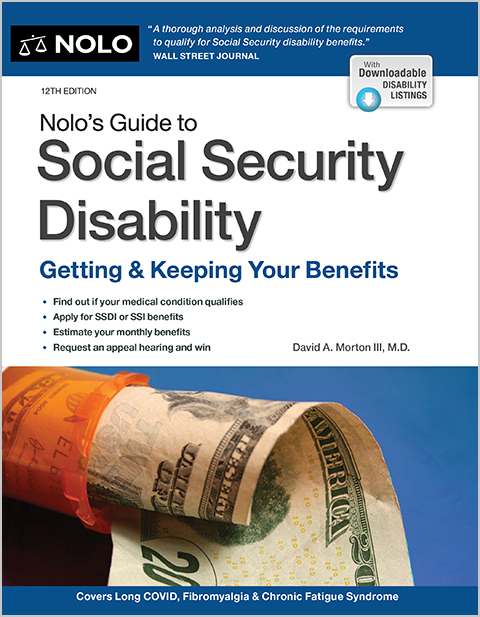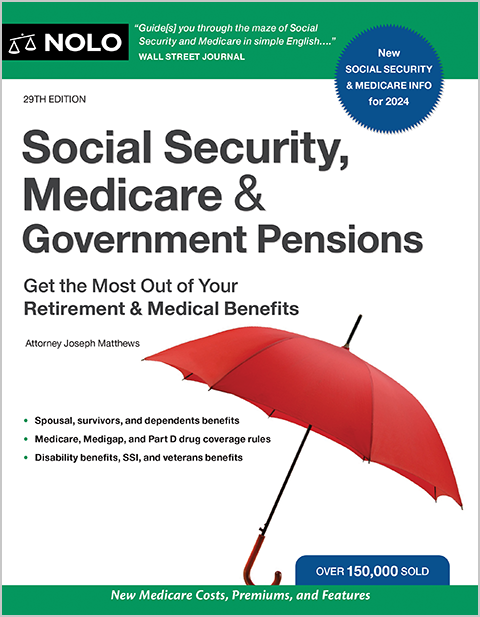Maryland’s Medicaid program pays for long-term care, including nursing homes and some assisted living, for those who can't afford to pay privately.
The average monthly cost of a private room in a nursing home in Maryland surpassed $12,800 in 2024. Maryland seniors likely to need long-term care will want to plan ahead to ensure they have a way to pay for that care.
There are three sources people tend to use to pay for long-term care:
- private funds
- nursing home (long-term care) insurance, or
- Medicaid.
For people who can't afford to pay privately and don't have long-term care (LTC) insurance, Maryland's Medicaid program (or "Medical Assistance"), administered by the Maryland Department of Health (MDH), might cover their care.
Medicaid is a medical assistance program funded by the federal and state governments to pay for, among other things, long-term care for people who meet certain requirements, such as being over 65, disabled, or blind. Other types of Medicaid services have eligibility guidelines that are different from the rules for long-term care coverage.
In Maryland, Medical Assistance provides long-term care coverage under certain circumstances. Patients who live in skilled nursing facilities, intermediate care facilities, or hospitals for 30 days or more and are determined by Medicaid to need this care can often qualify for Medicaid benefits—if they meet specified income and resource qualifications.
Maryland also operates certain Medicaid "waiver" plans, known as Home and Community-Based Services (HCBS) waivers. These HCBS waiver programs allow elderly individuals in need of assistance to remain living independently, in their homes and communities, instead of in a nursing home.
Maryland Medicaid Coverage for Nursing Homes
If you're 65 or older, blind, or disabled and meet the income and resource requirements, Maryland Medicaid covers nursing home costs under certain circumstances. To get coverage for nursing home care, not only do you have to be financially eligible, but you must also need the kind of care nursing homes provide, such as:
- 24-hour supervised nursing care
- therapy, and
- nutrition management.
To determine the level of care (LOC) that you need, Maryland Medicaid requires a physician's certification explaining the types of LOC services you need.
For more information about qualifying medically for Medical Assistance, visit Maryland's Department of Human Services (DHS) online or contact your local DHS office.
Medicaid Income Rules in Maryland
In Maryland, whether you're single or married, and whether or not your spouse is also applying to qualify for Medicaid-paid nursing home care, your income can't be more than the cost of the nursing home. This income limit for nursing homes differs from the income limits for other Medicaid health care benefits, including regular Medicaid and Medicaid waiver services (discussed below).
For example, the monthly income limit in 2025 for a single applicant for regular Medicaid for the aged, blind, and disabled (ABD) is $350. But the income limit is $2,901 per month for Medicaid waiver programs.
For purposes of determining Medicaid LTC eligibility, almost any income you receive from any source counts toward the limit, including:
- wages from work
- alimony payments
- pension payments
- all Social Security benefits
- Supplemental Security Income (SSI), and
- some veterans' benefits.
When only one spouse of a married couple applies for nursing home Medicaid or HCBS waiver services, the income of the non-applicant spouse doesn't count toward the limit. That's to ensure the "community spouse" (the one living outside the nursing home) has enough funds to live on.
Additionally, if the non-applicant spouse doesn't have enough income in their own name, they're entitled to keep a minimum monthly needs allowance (MMNA), which can range from $2,555 to $3,948 (in 2025). If you move into a nursing home and your community spouse's income is below the MMNA amount ($2,555), your spouse can keep some of your income to make up the difference.
Otherwise, if you qualify for Medicaid and live in a nursing home, you'll be expected to spend almost all your income on your care. Maryland Medicaid allows nursing home residents receiving Medicaid to keep only $102 per month as a personal needs allowance.
Maryland's Spend-Down Program
Maryland also provides a "medically needy" pathway, or "spend-down" program, that allows seniors over the income limit to qualify for Medicaid services if they have high, recurring medical expenses. Maryland's medically needy income limit (MNIL) for 2025 is $350 per month for an individual and $392 for a couple.
The spend down works like a deductible. The amount of your deductible is the difference between your monthly income and the MNIL. Once your medical bills add up to enough to meet your deductible, you'll become eligible for Medicaid coverage. Maryland redetermines eligibility (and you must meet your deductible) every six months.
Medicaid Asset Rules in Maryland
Medicaid for long-term care has resource rules, which you must satisfy to be eligible for coverage. The resource limits for LTC Medicaid differ from those for some other Maryland Medicaid programs. Resources are assets like:
- real property
- personal property
- life insurance with a cash value
- vehicles, including motorhomes
- boats
- bank accounts, and
- Individual retirement accounts (IRAs).
Not all assets count toward the Medicaid resource limit. Maryland exempts your:
- clothing and other personal belongings
- household furnishings
- automobile (limited to one)
- burial spaces, and
- primary home.
For your home to be exempt, you or your spouse must live in the home or you must intend to return to your home. If you don't have a spouse who lives in the home, your equity interest is limited to $730,000 (in 2025). If you have more equity than that, you may not qualify for Medicaid.
You'll have to total up all of your non-exempt, countable assets to determine how much you have in resources. If you're a single person, it can't be more than $2,500 for nursing home Medicaid or regular ABD Medical Assistance ($3,000 for ABD Medicaid for married couples). The limit is $2,000 for Medicaid HCBS waiver services.
If you're married and you apply for LTC Medicaid (waiver services or institutional care), your asset limit remains the same, but your non-applicant spouse at home can keep 50% of your countable joint assets—up to $157,920 (in 2025).
Maryland Medicaid HCBS Waiver Programs, Assisted Living, and Home Care Options
If you live in Maryland, you might be eligible for Medicaid long-term care services delivered outside of the nursing home setting via regular Medicaid or HCBS waiver programs. All these LTC services offer benefits designed to help seniors continue to live independently at home or in the community. But they have different eligibility requirements.
Long-term care services provided by regular Medicaid (ABD) are entitlements, meaning if you qualify for the service, you will get it. Waiver programs aren't entitlements, and there's a limit to the number of people who can receive services. That means you might encounter a waiting list for services through one of Maryland's Medicaid HCBS waivers.
For example, the Community Options (CO) Waiver provides services for eligible individuals who need help with activities of daily living and meet a nursing facility level of care. CO waiver services are provided in your home or assisted living center and can include:
- assisted living
- medical day care
- case management
- transitional services, and
- nurse monitoring.
Maryland's Increased Community Services (ICS) Program is a related program that offers similar services for seniors wishing to move out of nursing homes and back into their own homes or assisted living centers. ICS provides services like home modifications, personal care assistance, meal delivery, and assistive technology. But it's limited to 100 participants.
Another program, Community First Choice, allows eligible participants in need to receive at-home services featuring personal assistance with activities of daily living like:
- bathing
- grooming
- dressing
- meal preparation, and
- transportation.
The Community First Choice program is available through regular Medicaid, so there's no waiting list. But you must need an institutional (nursing home) level of care and qualify financially. Under this program, participants can actively self-direct care and can even hire family members to deliver care and receive compensation through Maryland Medicaid.
Community Personal Assistance Services, a related program, serves eligible individuals who live at home and need assistance in areas like personal hygiene, bathing, and meal preparation. An approved provider delivers these services, which are subject to nurse case monitoring.
For general information about these programs, contact the MDH at (410) 767-1739. To learn more about the Community Options Waiver, Community First Choice, Community Personal Assistance Services, and related programs, contact your local Maryland Access Point (MAP) office or call MAP at (844) 627-5465.
How to Apply for Medical Assistance in Maryland
You can access the DHS benefits portal to apply for Medical Assistance.
Before you apply for Medicaid coverage, you can check the eligibility rules on the MDHS website.
Typically, your nursing care facility can assist you with the Medicaid application process. For other questions about LTC Medical Assistance, you can call the Maryland DHS main office at (800) 332-6347.
Ready to create your will?


